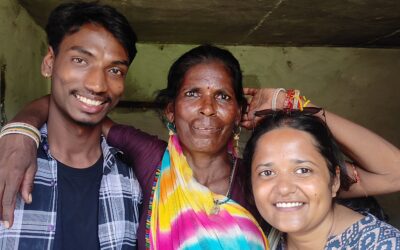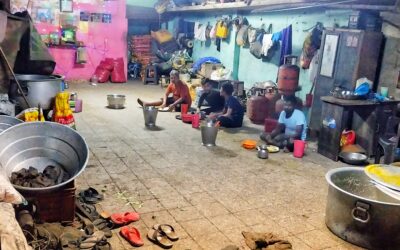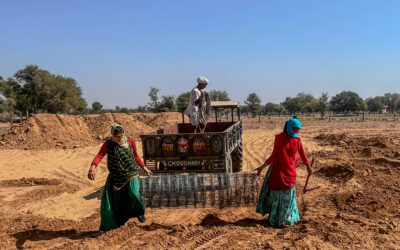Everyone agrees the planet is getting warmer. What do we do about it? How do we adapt to it?
More than two decades ago, Chewang Norphel, also known as the Ice Man of Ladakh, hit upon an ingenious idea. What if he could somehow store all the water that goes waste in the winter so that it can be used in spring, when it is most needed by farmers? That is when he used all his civil engineering knowledge to build an artificial glacier. He constructed a wide sloping diversion canal through a narrow stream and built check dams on it, so that when water would fall down from these dams, its flow would slow and the thin layer of it would form ice in the freezing winters of Ladakh. This would subsequently melt when the temperatures would start to increase from the months of March and April.
Read a post about Chewang Norphel by another India Fellow, Surya, here.
The only problem was, the surface area of these glaciers was too big. At once, the whole glacier would be exposed to sun’s heat and thus would melt very quickly. This would leave the fields with a substantial dry period between when this artificial glacier water would finish and the natural glaciers (receded and higher up) would start melting.

Inspired by Norphel’s work and to tackle this problem of dry period, Sonam Wangchuk, an education reformist and innovator, along with his team, came upon the idea of building a cone of ice similar to the shape of local sacred mud structures called stupas. Since this ice stupa would grow vertically up towards the sun, less surface area would be exposed to the sun’s rays and hence it would very well hold water until the month of June, when the natural glaciers would start melting. To build this stupa, water flows down from a pipe and at its lowest point (close to the stupa) starts to rise up. At night, in sub zero temperatures coupled with wind chill, the water that sprinkles out of the fountain falls down and freezes. This cycle helps in increasing the ice stupa’s size and gives it it’s shape.


Last month, I made a trip to Ladakh to work with the ice stupa team. I spent 6 days with them helping them in increasing the quantity of ice (and thus water) by tying threads and nets from higher points to lower points on the stupa. As trivial as it sounds, it’s not. The threads and nets soak the water when it’s sprinkled from the top and overnight a layer of ice is formed around them. The dripping water also forms stalactites on the threads and nets, thereby increasing the quantity of ice. These also make it easier to climb higher up on the stupa for whenever there is a need to work on top. On some days, we also put sea buck thorns under these threads and nets to fill the gaps. The thorns also catch water and form ice around the branches, thus filling the gap with ice.
If this is not done, sometimes the weight of the ice on the threads is so much that it makes it dangerous to climb on them without a base of thorns underneath. Interestingly, one can also go inside the stupa through a tunnel to attach more pipes (to increase height) or carry out general maintenance. I also helped Shahzad, a member of the stupa team, in building a tunnel and dome with wooden sticks, PVC pipes and threads. When water falls on this structure, it freezes to form ice around the sticks, threads and ice, which solidifies the dome.


The team stays in a greenhouse that stays warm even in the harshest of winters without the use of any electrical heater. The greenhouse is constructed of stone, brick and wood. The south side of the house is covered with a slanting poly-sheet for maximum infiltration of sunlight, which helps in trapping the heat.

Without a doubt the ice stupa team works in one of the harshest environments only to find solutions that will help us adapt to a warmer world. A world that we are creating – by consuming, by wasting …




0 Comments